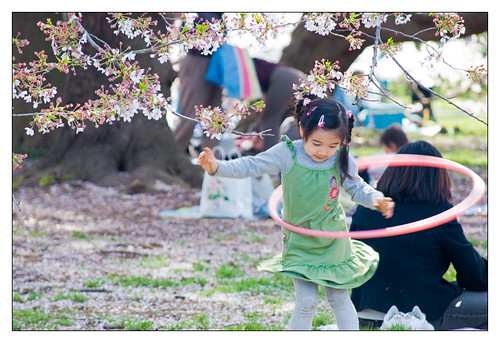Spring Equinox
**** **** **** **** **** **** ****
Happy Spring! I woke up this morning to an inch and a half of snow so it doesn't feel much like spring, but the days are getting longer and longer so it must be. In fact, the fruit trees are flowering like crazy and the wet snow last night caused a very pretty plum tree to fall across my apartment's driveway and a quite large alder fall in my dog walking park. When spring is defined as the season of growth
it doesn't matter what the weather is, those plum blossoms, the daffodils below them and the 7pm sunset are telling us that spring has sprung!
 |
| Waterfront Blossoms by Nick Nada |
These last two days I have been listening to the wonderful interview Krista Tippet did with Iranian-American scholar and professor Fatemeh Keshavarz about the poetry of Rumi, the 13th century Persian sufi writer. It has been a wonderful way to celebrate the growing spring, even as I drive around in the rain and snow.
Come to the orchard in Spring.
There is light and wine, and sweethearts
in the pomegranate flowers.
If you do not come, these do not matter.
If you do come, these do not matter.
From A Great Wagon
Rudolph Steiner wrote that the earth, like all sentient beings, has a soul and goes through cycles of inbreaths and outbreaths. He saw the summer as the peak of the earth's outbreath, when the soul of the planet is in communion with the cosmos. The winter, then is the peak of the earth's inbreath when the soul is completely within its own rocky body. Spring is the time of the outbreath, the release after a long winter and the time when the solid physical-ness of winter meets with the active ethereal-ness of summer. At the spring equinox these energies are balanced, the bodies of plants, animals and even people if they are in tune, move and spin in growth while still being well contained by their physicality.
 |
| Kids Playing by YoAndMi |
Rumi's poetry balances on and bridges the border between physicality and transcendent, as well. Many of is poems seem erotic, describing a beloved's body, scent or countenance. Like all the best poetry it is unclear who exactly the beloved being spoken of is, god or an earthly lover? Keshavarz says that to Rumi these two kinds of loves, and all the other kinds of loves we experience, are places along the continuum of human experience. The goal, she says, is to purify the soul but that the rest of the human experience is not base or sinful. "Love, whether of this kind or that kind ultimately leads you to the same king," writes Rumi. We are here in a physical body so that it can help us along our path. Keshavarz quotes a famous Sufi tale in which a young man approaches a master over and over asking for teaching. The master refuses to teach the young man, asking "Have you ever fallen in love with a woman?" "No", the young man replies, "I am just 18 years old." The master answers simply, "Well, go try that first." The physical world is a tool of the soul on it's journey, a very important tool.
The world is a mountain
Whatever you say, good or bad, it will echo it back to you
Don't say I sang nicely and mountain echoed an ugly voice…
That is not possible
The human intellect is a place where hesitation and uncertainty take root
There is no way to overcome this hesitation…except by falling in love
To reach the sea and be happy with a jug water is a waste
The sea that has pearls…
And a hundred thousand other precious things.
 |
| Waterfall by rknickme |
What does spring look like where you are? Flowers and sun or snow and mud? Have you ever read or heard any Rumi poems before? Which are your favorites? How do you celebrate the physicality of life? How do you stay centered while moving?
*** *** ***
Be sure to check out Krista Tippet's On Being for downloads of the radio interview, transcripts, recordings of the poems I quoted and more plus photos, reflections and so much more. And subscribe to On Being so we can talk about all the shows! Also, check out some other poems that I decided not to include, but are are too good to go without a mention. Rainer Maria Wilke's Widening Circles read by Joanna Macy on an older episode of On Being, and Robert Frost's A Prayer in Spring. It's almost National Poetry month, aren't you excited!
**** **** **** **** **** **** ****
Spring Equinox
Spring Equinox 2009: Spring Equinox
Spring Equinox 2010: Giving Thanks at the Equinox and Easter
Spring Equinox 2011: Spring Equinox (apparently I'm a creative namer of spring equinox posts...)




